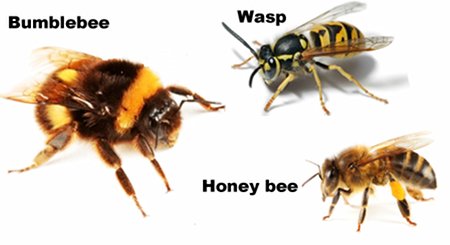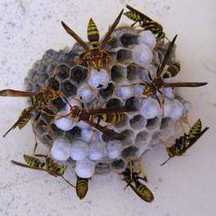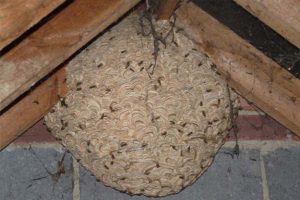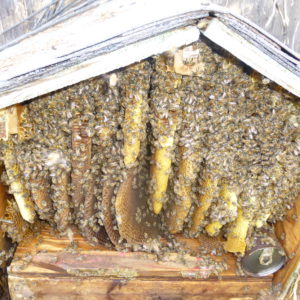Bee Removal Mesa, AZ | Yellow Jackets, Wasps, Hornets
Mesa Bee Control & Extermination
 Bro’s Pest Control specializes in bee removal Mesa, AZ. Bro’s Pest Control is your connection to safe bee removal and extermination services in the Mesa area. Exterminators within our network specialize in: wasp control, hornet control, bee swarm removal and bee removal. Pest control services can also include sealing off the entrances and exits, repairs from hive and damage, as well as traps. Bee’s can pose danger, especially if a loved one is allergic. Contact Bro’s Pest Control today to control your bee problem in the Mesa area.
Bro’s Pest Control specializes in bee removal Mesa, AZ. Bro’s Pest Control is your connection to safe bee removal and extermination services in the Mesa area. Exterminators within our network specialize in: wasp control, hornet control, bee swarm removal and bee removal. Pest control services can also include sealing off the entrances and exits, repairs from hive and damage, as well as traps. Bee’s can pose danger, especially if a loved one is allergic. Contact Bro’s Pest Control today to control your bee problem in the Mesa area.
For Bee Control Mesa, Arizona Call, 1-888-497-9069
Specialized Bee Removal & Extermination
Bro’s Pest Control professionals can help you with all different bee problems including:
 Removal of hives, bee swarm removal, yellow jacket removal, hornet removal, bumble bee removal and various of bee removal jobs. Bee removal Mesa, AZ experts will come out to your home or business and remove unwanted bee’s safely and at a reasonable price. Same day appointments for bee removal can be scheduled, if needed. Ready for bee control Mesa, AZ? Contact us today by calling 1-888-497-9069.
Removal of hives, bee swarm removal, yellow jacket removal, hornet removal, bumble bee removal and various of bee removal jobs. Bee removal Mesa, AZ experts will come out to your home or business and remove unwanted bee’s safely and at a reasonable price. Same day appointments for bee removal can be scheduled, if needed. Ready for bee control Mesa, AZ? Contact us today by calling 1-888-497-9069.
Bee, Wasp & Hornet Treatment
 Bee, wasp or hornet treatment Mesa, AZ will require one of our bee specialists to come out to your home to perform a free inspection. They will arrive fully equipped to eliminate your bee issue. The bee exterminator will identify the location of the nest, depending on the type of stinging insect problem you have, and eliminate/remove the problems to protect your family’s health and safety. In the case of a hornets nest, the technician will treat the nest and return to remove it after insuring that all the pests have been killed.
Bee, wasp or hornet treatment Mesa, AZ will require one of our bee specialists to come out to your home to perform a free inspection. They will arrive fully equipped to eliminate your bee issue. The bee exterminator will identify the location of the nest, depending on the type of stinging insect problem you have, and eliminate/remove the problems to protect your family’s health and safety. In the case of a hornets nest, the technician will treat the nest and return to remove it after insuring that all the pests have been killed.
Bees are flying insects closely related to wasps and ants, known for their role in pollination and, in the case of the best-known bee species, the European honey bee, for producing honey and beeswax. For bee removal Mesa, AZ — contact us today!
Bee Extermination Mesa, Arizona
 Assuming the bee's in question are not honeybee's, a Bro's Pest Control expert can exterminate them. Every year, beekeepers are called upon to give advice regarding the removal of honey bees (and other insect pests) from homes and buildings since honey bees are NOT to be exterminated. Honey Bee removal on the other hand, includes relocating the bee's to a different location. If you have a bumble bee, wasp or yellow jacket bee problem in Mesa, AZ -- then extermination can be done. For wasp, bumble bee, hornet or yellow jacket extermination Mesa, AZ -- please get in touch with Bro's Pest Control today!
Assuming the bee's in question are not honeybee's, a Bro's Pest Control expert can exterminate them. Every year, beekeepers are called upon to give advice regarding the removal of honey bees (and other insect pests) from homes and buildings since honey bees are NOT to be exterminated. Honey Bee removal on the other hand, includes relocating the bee's to a different location. If you have a bumble bee, wasp or yellow jacket bee problem in Mesa, AZ -- then extermination can be done. For wasp, bumble bee, hornet or yellow jacket extermination Mesa, AZ -- please get in touch with Bro's Pest Control today!
Mesa, Arizona
Mesa (/ˈmeɪsə/ MAY-sə) is a city in Maricopa County, in the U.S. state of Arizona, and is a suburb located about 20 miles (32 km) east of Phoenix. Mesa is the central city of the East Valley section of the Phoenix Metropolitan Area. It is bordered by Tempe on the west, the Salt River Pima-Maricopa Indian Community on the north, Chandler and Gilbert on the south, and Apache Junction on the east. As of the 2010 Census Mesa became Arizona's center of population.
Mesa is the third-largest city in Arizona, after Phoenix and Tucson, and the 38th-largest city in the US. The city is home to 439,041 people as of 2010 according to the Census Bureau. Mesa is home to numerous higher education facilities including the Polytechnic campus of Arizona State University.
The Africanized bee, also known as the Africanised honey bee and known colloquially as "killer bee", is a hybrid of the Western honey bee species (Apis mellifera), produced originally by cross-breeding of the African honey bee (A. m. scutellata), with various European honey bees such as the Italian bee A. m. ligustica and the Iberian bee A. m. iberiensis.
The Africanized honey bee was first introduced to Brazil in the 1950s, in an effort to increase honey production; but, in 1957, 26 swarms accidentally escaped quarantine. Since then, the species has spread throughout South America, and arrived in North America in 1985. Hives were found in south Texas of the United States in 1990.[1]
